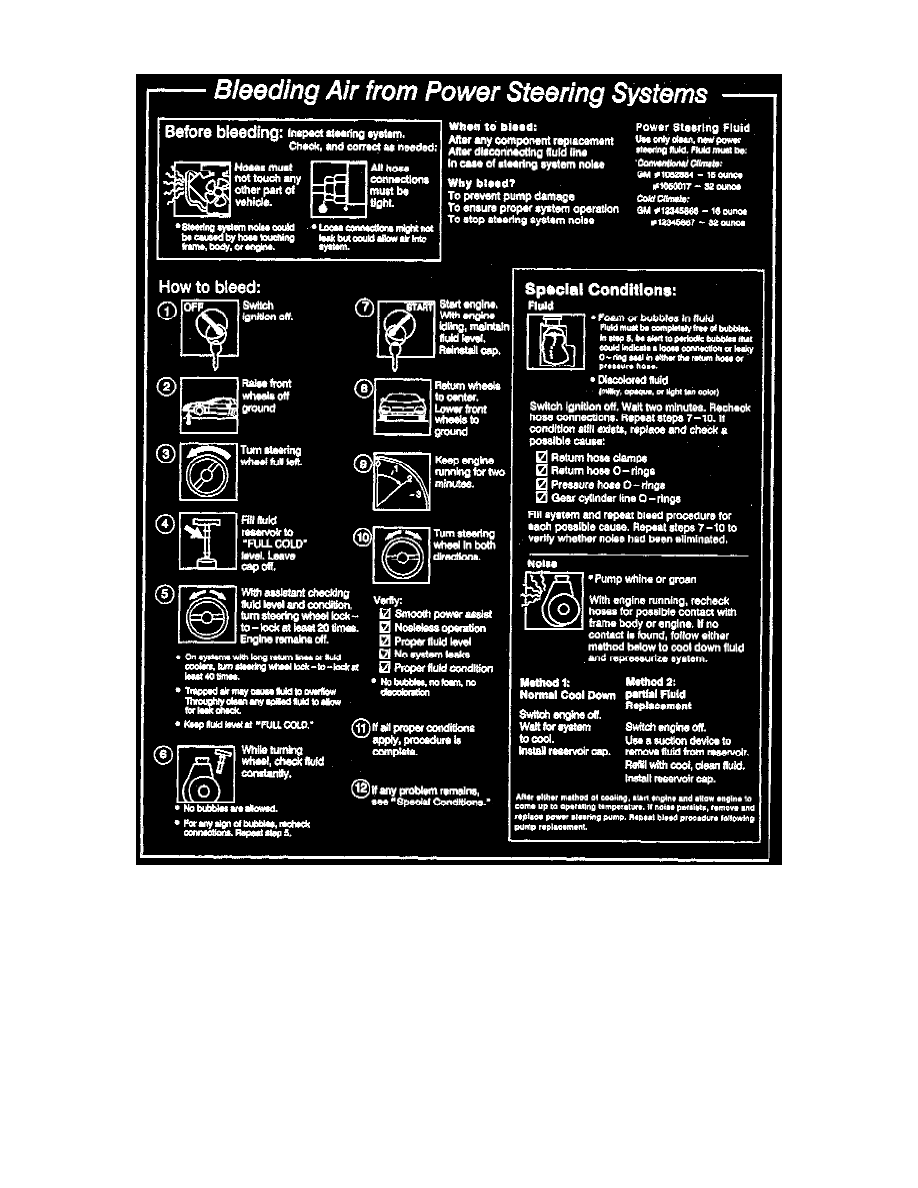Malibu V6-191 3.1L VIN M SFI (1997)

Power Steering Bleeding: Service and Repair
Bleed air from the system after replacing the fluid or servicing the power steering hydraulic system. Air in the system prevents an accurate fluid level
reading, causes pump cavitation noise, and over time, could damage the pump. To bleed the power steering system, proceed as follows:
1. With the engine off and front wheels lifted off the ground and turned all the way to the left, add either standard power steering fluid or optional
cold climate fluid to the "Full Cold" mark on the fluid level indicator.
2. Bleed the system by turning the wheels from side to side without hitting the stops.
Important: This may require turning the wheels from side to side several times. Keep the fluid level at the "Full Cold" mark. Fluid with air in it
has a tan appearance. This air must be eliminated before normal steering action can be obtained.
3. Start the engine. With the engine idling, recheck the fluid level. If necessary, add fluid to bring the level to the "Full Cold" mark.
4. Return the wheels to the center position. Lower front wheels to ground. Continue running the engine for two or three minutes.
5. Road test the vehicle to be sure the steering functions normally and is free from noise.
^
Inspect for fluid leakage at connection points along the power steering system.
6. Recheck the fluid level as described in Steps 2 and 3, except that the fluid level should now be up to the "FULL HOT" mark after the system has
stabilized at its normal operating temperature.
